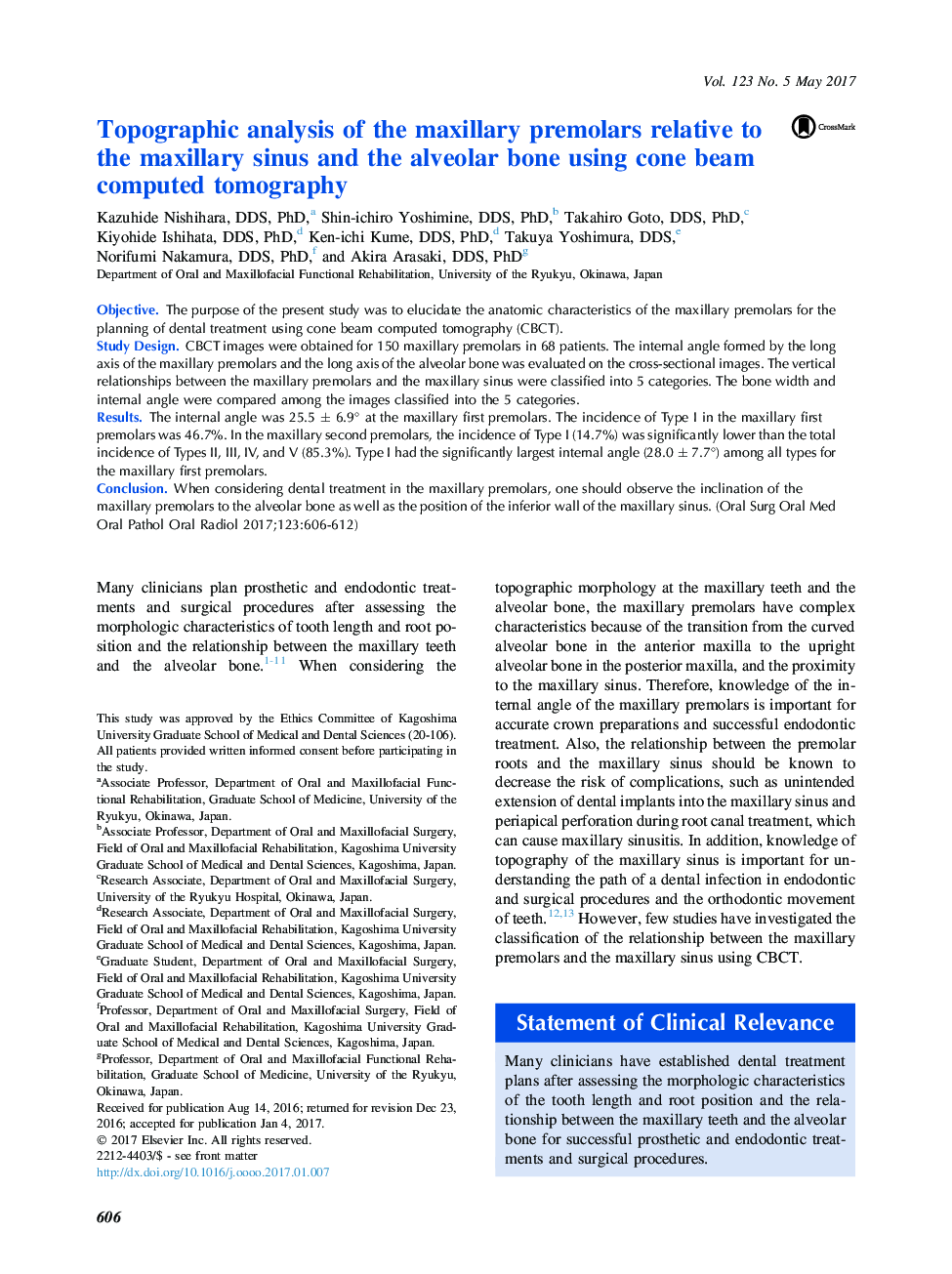| Article ID | Journal | Published Year | Pages | File Type |
|---|---|---|---|---|
| 5643197 | Oral Surgery, Oral Medicine, Oral Pathology and Oral Radiology | 2017 | 7 Pages |
ObjectiveThe purpose of the present study was to elucidate the anatomic characteristics of the maxillary premolars for the planning of dental treatment using cone beam computed tomography (CBCT).Study DesignCBCT images were obtained for 150 maxillary premolars in 68 patients. The internal angle formed by the long axis of the maxillary premolars and the long axis of the alveolar bone was evaluated on the cross-sectional images. The vertical relationships between the maxillary premolars and the maxillary sinus were classified into 5 categories. The bone width and internal angle were compared among the images classified into the 5 categories.ResultsThe internal angle was 25.5 ± 6.9° at the maxillary first premolars. The incidence of Type I in the maxillary first premolars was 46.7%. In the maxillary second premolars, the incidence of Type I (14.7%) was significantly lower than the total incidence of Types II, III, IV, and V (85.3%). Type I had the significantly largest internal angle (28.0 ± 7.7°) among all types for the maxillary first premolars.ConclusionWhen considering dental treatment in the maxillary premolars, one should observe the inclination of the maxillary premolars to the alveolar bone as well as the position of the inferior wall of the maxillary sinus.
